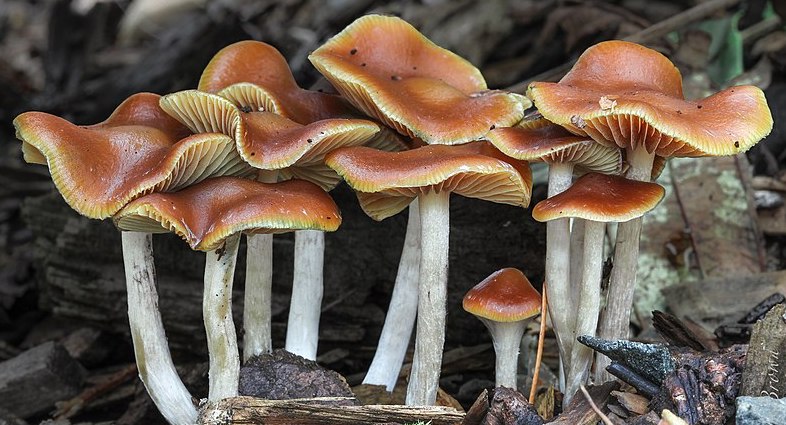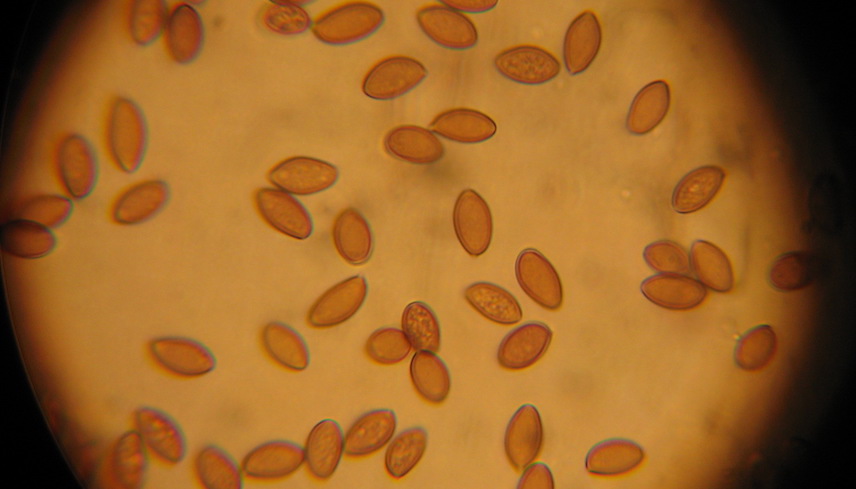Blue-ming Marvellous
But, I digress — this name is a clue as to one of the qualities of this sought after shroom — if touched or disturbed at all, it bruises a rich blue (or should that be cyan?) This readiness to go blue is exactly why it is a sought after, for it belies the high levels of psychoactive compounds concealed within. Yes that blue-ing works like a flare to magic mushroom foragers — it means you can be sure of the presence of compounds psilocybin, psilocin and baeocystin in your find — and Psilocybe cyanescens have them in spades. On average P. cyanescens contains 0. 85% psilocybin and 0.36% psilocin — not for the faint hearted!

Not only are they strong, but they are bountiful. Would you believe that the biggest crop of them ever discovered was an army of 100,000, sprouting happily by a race track in England? Appropriately, the species was first officially described in England (although it is not native to there) in 1946 by Elsie Wakefield in her publication ‘Transactions of the British Mycological Society’. She had apparently been collecting them since 1910… doing what with them, we can only speculate — but one hopes she had a good trip…
Where and When?
Although it has spread enthusiastically around the world, the original home of the P. cyanescens is thought to be the Pacific Northwest of the United States and Central Europe. The reason for their so-very-successful migration is largely thanks to humans. This magic mushroom thrives in woody substrates, and found commercially made wood chips and garden mulch to be very much to their liking — they are thought to have contaminated most of the main sources of these products. Thus, they can often be found in gardens or trails that feature wood chips, woody debris and mulch.
Look-Alikes
The Psilocybe cyanescens has a distinctive wavy cap, which helps in its identification if the wild to some extent. However, it does have an evil twin that can make foraging for this shroom risky if you don’t know your stuff. The Galerina marginata, though not closely related, has been mistaken for the P. cyanescens on occasion, with fatal results. The confusion occurs as both mushrooms have a similar appearance and habits, often growing side by side. A way to tell them apart is by the differing colour of their spore prints — but this is best left to the professionals.
Nicknames/ History
The Psilocybe cyanescens, like anything popular, has a few nicknames. These are based on the defining characteristics of easy-bruising and its wavy cap. They include Wavy Caps, Blue Meanies, Blueleg Brownie, Blue Halo and Caramel Cap.

Vital stats: How to Spot This Shroom!
To identify a Psilocybe cyanescens, check out the following:
Cap: measuring between 2-5cm in diameter, rounded in youth, becoming convex with age and developing its characteristic wavy cap. The colour of the cap is hygrophanous, which means it depends on the moisture levels of the mushroom. When moist the cap is a rich caramel colour, fading to pale yellowish when dried.
Gills: quite crowded, initially light brown — they grow darker spots — and eventually become a dark reddish-brown, though often with pale margins.
Spores: elongated ellipsoid (oval) in shape. When deposited they are a dark purple brown. The spore print presents as dark purple-brown to purple-grey.

Stem (or stype): between 2-8cm long and 0.2cm to 0.5cm thick, widening towards the base, sometimes curved. Pale whitish in colour, but blue-ing when bruised. Smooth and silky to the touch, with rhizomorphs (root-like tufts) at the base.
Taste and Smell: The taste and smell of the Psilocybe cyanescens is described as farinaceous which means ‘containing starch’. Apparently similar to freshly ground flour. Unusually Psilocybe cyanescens are thought to be more potent when fresh than when dried.
Can I eat it? : It is edible, but potently hallucinogenic. Proceed with caution
Find it: anywhere that there is woody mulch — from Goldengate Park to Kew Gardens.
When: when there is a drop in temperature — usually from October till February.
Family: Hymenogastraceae
Genus: Psilocybe
Species: cyanescens





